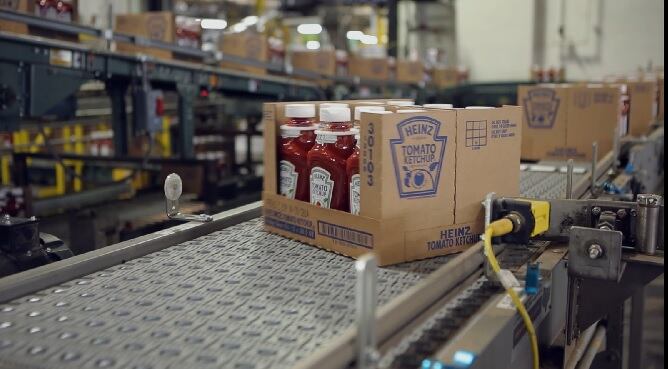“Three years ago, our company was on the bottom of the industry. It was on the bottom in terms or morale, which was very low, turnover, which was very high, and it was even hard to identify areas that we could consider excellent,” Patricio acknowledged last week at Bernstein’s 39th Annual Strategic Decisions Conference.
But, he added, “we’ve been working hard to get out of this bottom and I would say that today, we feel that we are a good company. We are no longer at the bottom. We are a very different company.”
And while he noted that “good is not good enough” and that Kraft Heinz can and will continue to do better until it is “great,” he also expressed frustration that investors and others continue to write and talk about Kraft Heinz as if it is still on the bottom – citing examples from three years ago that he says no longer apply.
He explained Kraft Heinz is often mischaracterized as overly exposed to private label, but that is no longer the case after the company sold its nuts and cheese businesses to reduce its exposure to commodities and the low prices and tight margins often associated with them.
He also noted dismissive assessments that Kraft Heinz’ goal of securing $2bn in gross cost savings by 2024 was too lofty and impossible to achieve, when the company is “getting there year-after-year” by improving the efficiencies of its factories, reducing waste, reducing energy consumption and tackling other variable costs rather than relying on trimming fixed costs, as done in the past and which is limited.
Finally, he said that Kraft Heinz often is mischaracterized as not having a good relationship with customers, when it was just ranked by Advertising Age as one of the best sales organizations in America and “grew big time in Canada.”
To help set the story straight, Patricio said Kraft Heinz will take “every little moment moving forward” to better communicate and share its progress so that how the market values the company better aligns with how he sees it and reflects the significant changes he has helped instigate in the past three years.
Reframing ownership to ensure the whole is more than the sum of its parts
Among the many achievements that Patricio says he wants to highlight since taking the helm at Kraft Heinz, and which he says is fundamental to its turnaround, is a reframing of the company’s core value of “ownership” that Patricio says he shares but which he also claims became “distorted” under previous management.
He explained that while ownership can be an empowering motivator and growth driver if the incentives are correct, it also can misplace employee loyalty to individual parts of the company rather than the whole if the incentives are not applied carefully.
For example, he said, when he became CEO, Kraft Heinz was divided into 75 entities, each of which was run like a business unit with different objectives, targets and incentives. This framework gave ownership to the units to do what was best for them, but it also divided the ownership across many small parts so that Kraft Heinz couldn’t efficiently leverage its broad reach and scale to drive growth.
Patricio explained it caused infighting for resources because if one unit was doing well and another was struggling it felt like a penalty to redirect resources from the thriving unit to the struggling one.
“This is wrong. Ownership should be about maximizing the company, to put the company ahead of yourself,” he said. “So, we have only one entity today and the targets are for the US [not individual units] and [this shift] changed dramatically the way that people were or are today working together.”
He explained that prior to this shift, there was little communication between the entities, but now there is much more cooperation.
Just as Patricio has focused on uniting Kraft Heinz, he says the company has become more decentralized – especially in the US.
“One of the things we did was to reduce the layers of the company to make people more accountable,” and redefine teams so that employees at different levels of the company were empowered and better understood their impact, he said.
Prizing partnerships and sharing ownership
This mentality of giving individuals ownership over their contribution to the whole also applies to Kraft Heinz’s approach to external partnerships by recognizing that two heads can be better than one if they complement each other and work together.
Under the third phase of Patricio’s transformation of Kraft Heinz, nicknamed Agile@Scale, the company is looking for partnerships that Patricio says will help accelerate its growth without having to reinvent the wheel.
For example, he pointed to a recent partnership with NotCo to create plant-based products by leveraging Kraft Heinz’s scale and NotCo’s artificial intelligence capabilities.
“We got together because we can give them scale, we can give them association with our brands and they can give us a very fast way to solutions for our portfolio. So, that’s a great example of partnership gaining velocity,” he said.
Another recent example that Patricio pointed to was Kraft Heinz’s partnership with Microsoft to leverage machine learning and advance analytics to accelerate innovation and improve promotions.
Through this partnership, Kraft Heinz can access detailed data and insights to tailor its approach to different business initiatives ranging from enhanced promotions that are tailored by region, outlet and consumer to improved supply chain planning and factory management to faster more accurate product innovation.
Through these initiatives and others, Patricio says that Kraft Heinz will continue its “journey to greatness” so that eventually it will be at the top – and far from the bottom where it hit just a few years ago.


